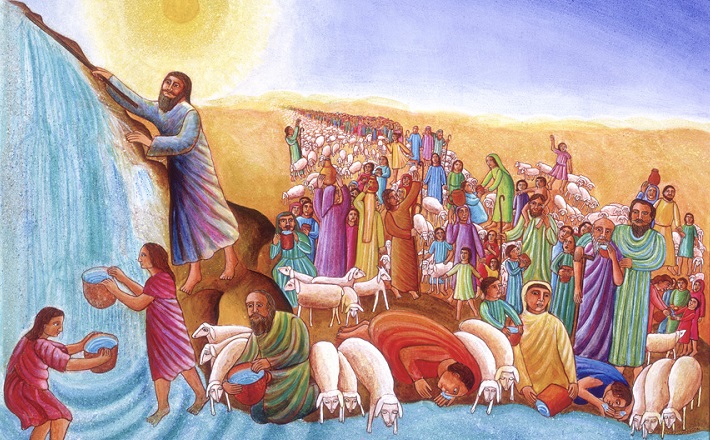Commentary on Isaiah 42:1-9
Isaiah 42:1-9 contains one of the famous Servant Songs of Second Isaiah (see Isaiah 42:1-4; 49:1-6; 50:4-9; 52:13–53:12; see also Isaiah 61).
[Editor’s note: An earlier version of this page featured commentary by Juliana Claassens from Dec. 14, 2014.]
Let’s begin by detailing what exactly Isaiah 42:1-9 says about the servant and his ministry. The servant:
- is upheld and chosen by God (verse 1)
- is one in whom God delights (verse 1)
- is one on whom God’s Spirit resides (verse 1)
- brings forth justice to the nations (verse 1)
- does not raise his voice in the streets (verse 2)
- does not break a bruised read or quench a burning wick (verse 3)
- faithfully brings forth justice (verse 3)
- will tirelessly work until he has established justice in the earth (verse 4)
- has teaching that the coastlands wait upon (verse 4)
- has the support of God (verse 6)
- is given as a “covenant to the people” (verse 6)
- is a “light to the nations” (verse 6)
- will “open the eyes that are blind”(verse 7)
- will “bring out the prisoners from the dungeon … those who sit in darkness” (verse 7)
- is part of the “new things” God is up to (verse 9)
The servant is chosen by God for a mission of global scope that includes healing, teaching, and establishing justice. The servant’s deeds are part of the “new thing” that God is doing on behalf of exiled Jews, who find themselves driven to the far reaches of the earth.
It is difficult to say anything about the specific historical identity of this “servant,” and the ambiguity may in fact be intentional. But what we can say with certainty is that the servant is a focal point of God’s promissory activity. Without an ounce of exaggeration, we can say that this servant is not only the hope of Israel, but also of the whole world.
The lack of historical specificity may be due to the fact that the servant seems to be primarily a creature of hope and not of history. He only exists as a prayer, not as a person in history. And the editors of Isaiah seem largely content to leave matters that way. The book of Isaiah has undergone significant redaction over centuries, and its many editors apparently felt no compulsion to explain the servant’s identity. It is left entirely open ended.
The ministry of the servant is what it looks like when the Kingdom of God arrives anywhere, anytime–whether that by the 6th century BCE, the 1st century CE, or the 21st century CE. When the servant arrives, so do justice, light, and freedom. The servant is a “new covenant shed for you and for all people,” a light to the nations, restoring sight to the blind, breaking prison chains, and the “new thing” that God is doing.
So in the season of Advent (a season of prayerful hope for Christ’s coming), we are right to read texts that celebrate the servant’s coming in the past, present, and future. This is especially true, given that Christ’s first coming only accomplished these things in a partial, hidden way. Justice remains an unattainable ideal, darkness continues to obscure light, and the coastlands continue to wait upon God’s word of hope. And so, like the coastlands of verse 4, we are still waiting on God’s Word.
PRAYER OF THE DAY
God of light, you sent a savior into the world to bring justice and release to all who are in bondage. Shine this light upon us, and show us how to bring justice and peace to all who suffer. We pray these things in the name of Jesus Christ, our Savior and Lord. Amen.
HYMNS
Savior of the nations, come ELW 263
In deepest night ELW 699
Christ be our light ELW 715
CHORAL
AdventCarol, Alfred Fedak


December 16, 2018